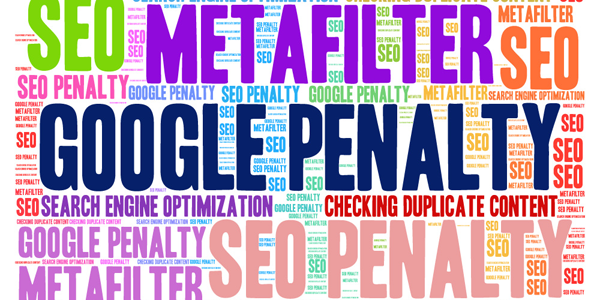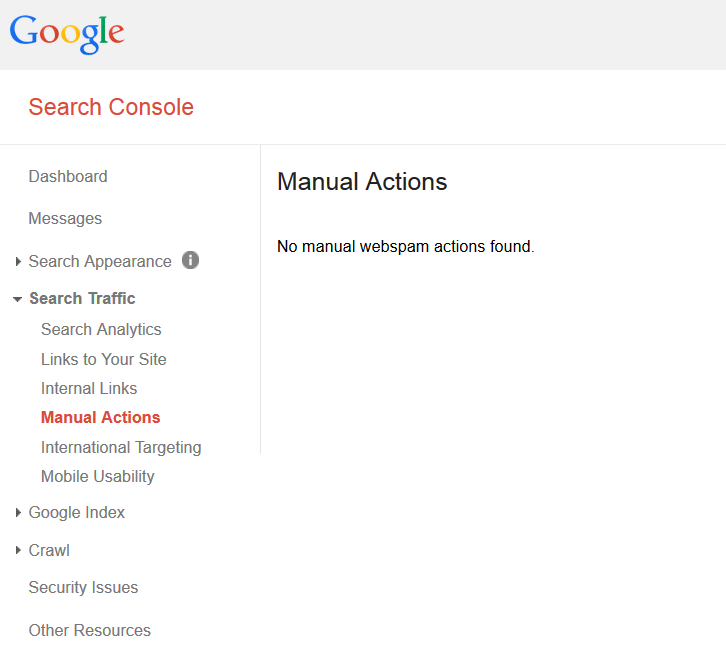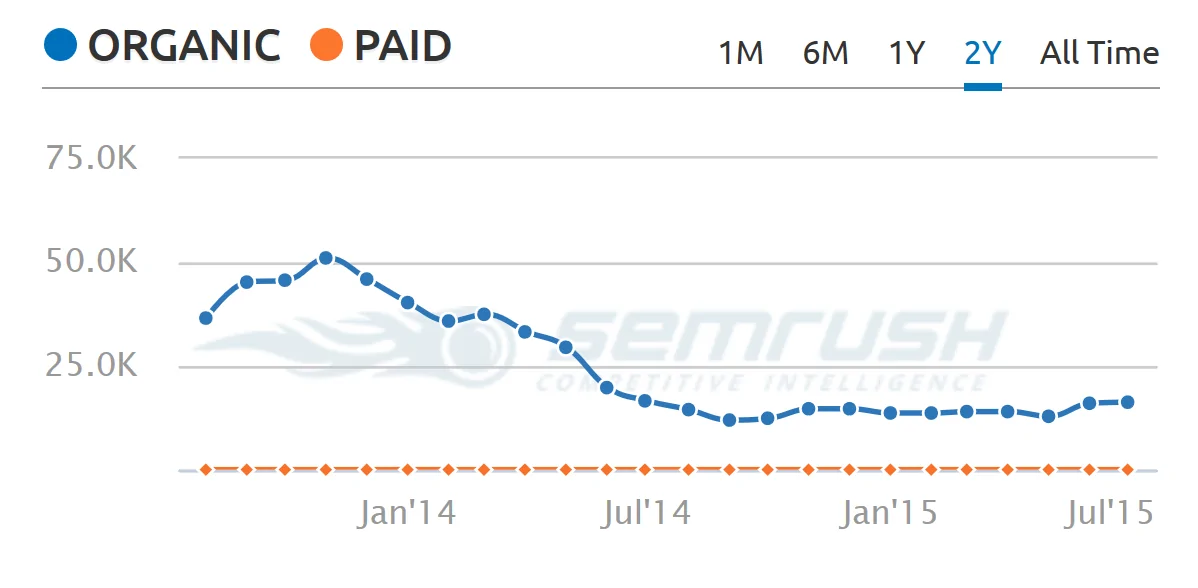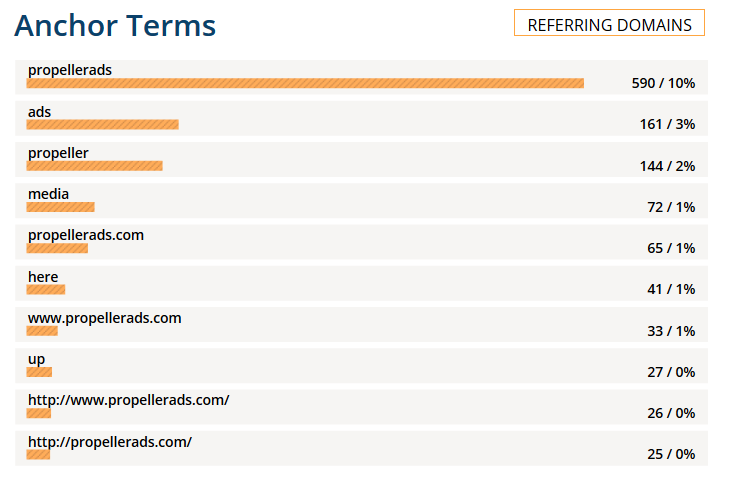6 must follow tips to avoid receiving a Google penalty

One of the worst feelings in the world as an online marketing specialist is seeing your growing website empire come to a crashing halt. There are many ways this can happen, but by far the most common is via a Google penalty.
If your website gets stung with a penalty, it will lose its rankings in the searches, website traffic drops and income is slashed:
These penalties sometimes come without warning and are put into immediate effect with no warning. Many online marketers know very little about Google’s guidelines and often break them unintentionally. In this article, we go over the most common mistakes website owners implement that sees them receive a Google penalty.
What is a Google penalty?
A Google penalty is the result of a website breaking Google’s terms of service. The result impacts a website’s search visibility on Google with penalties being awarded manually or due to an algorithm update.
A manual penalty involves a member of the Google team viewing your website and finding it has breached their guidelines. An algorithmic penalty is when your website triggers a filter which is automatically picked up by their search algorithm (Panda and Penguin).
The results of these penalties can see your website drop in the rankings to being completely delisted from Google. To find out if your website has received a manual penalty you can visit Google Webmaster Tools, select your website from the dashboard and go to Search Traffic > Manual Actions:
Here you will see if you have any manual penalties against your site. The image above shows there are no manual actions found for the site (no penalty).
Knowing if you received an algorithmic penalty is a lot harder to spot as Google does not inform you. You will most likely have to run an audit on your website and see which rule(s) you may have broken. To get you started, we’ve listed 6 of the most common causes for receiving a Google penalty.
1. Link farms and link wheels
A link farm or link wheel are a collection of websites that exchange backlinks from one another. The idea of these farms is to exchange links to boost their website’s Page Rank which propels their content higher on Google. Google’s TOS state that link schemes are unnatural and against their quality guidelines.
Ezine were once a very powerful guest blogging platform who were hit with a Google penalty and lost the lion’s share of their traffic:
You may get approached by link farms who ask you to pay a small fee in exchange for a backlink but be careful when doing so. Google is cracking down heavily on link farms and anybody associated with them.
2. Hiding keyword text (or using too many keywords)
Overusing keywords in an article is known as keyword stuffing and against Google’s guidelines. Using the same keyword over and over on a webpage can end up having a big negative effect on your website’s SEO.
Some marketers stuff keywords on pages but color them in the same font as their background so readers cannot see them. They may fool their readers but not Google’s web crawlers.
Keep your keyword density to no more than 2% to avoid keyword stuffing.
3. Copying content
Never steal someone else’s content. Google does not index pages that contain duplicate content as it confuses searchers. The same applies to spinning content (re-wording an original article), ensure everything you put on your website is 100% organic.
It’s fine to take a quote from another website and place it on your website, just be sure to provide a backlink to the source. Some of you may not write your own content but outsource the task, to know if all content received is organic run it through Copyspace, an online tool that spots duplicated and spun content.
Entry level writers often scrape content from other sites which can seriously damage your website’s reputation and rankings.
4. Make sure all advertising links are no-follow
To Google, there are only two types of web links:
Do-follow – These are links that pass Page Rank to the website linked. A do-follow link tells Google’s web crawlers to follow this link.
No-follow – These links do not pass Page Rank to the website linked. A no-follow links tells Google’s web crawlers not to follow this link.
Backlinks play a big part in Google ranking content and have guidelines you must follow. Whenever you link to websites that contain affiliate links, paid adverts or cases where you were given money to place a link on your website, the link should have the no-follow tag after it.
Only natural links to high quality sites should be have the do-follow tag. To find out how to create no-follow tags on links click here.
5. Don’t overuse anchor text
Anchor text is a word or phrase that has a hypertext link attached (like the click here link above) which redirect uses to a new webpage. A do-follow link with the right anchor text from a high Page Rank website can result in the target page ranking #1 on Google for a single keyword.
For example, let’s assume you sell office chairs in London and want to rank #1 on Google for Office chairs London. You decide to visit website and forums and leave a comment with your anchor text as Office Chairs London with a link pointing back to your site.
Overusing anchor text can automatically trigger the Google Penguin algorithm to slap your website with a penalty. Generic or branded anchors should be used when possible to avoid upsetting Google.
Check out our most common anchor links, they are either branded (Propeller, www.PropellerAds.com) or generic (here, ads):
6. Avoid all black hat techniques
Black hat SEO are tactics that trick or manipulate Google’s search algorithm to rank a webpage higher in searchers. This involves finding a weakness in Google’s algorithm and exploiting it.
Using black hat SEO will see your website will rank well in the short-term, but once Google finds out (and it will find out) your website could be de-listed forever, killing your income stream.
Summary
Many marketers don’t realise that affiliate links must be no-follow or that copying content can affect a website’s position on Google. These types of penalties are just as common as marketers who use aggressive link building strategies, create too much thin content or overuse keyword anchor text.
Following these 6 tips will drastically reduce the likelihood of you receiving a Google penalty. And even if you do get hit with a penalty, most can be reversed once you find out the cause and resolve the issue. The only problem is that this can sometimes take weeks if not months and end up costing a lot of money.




